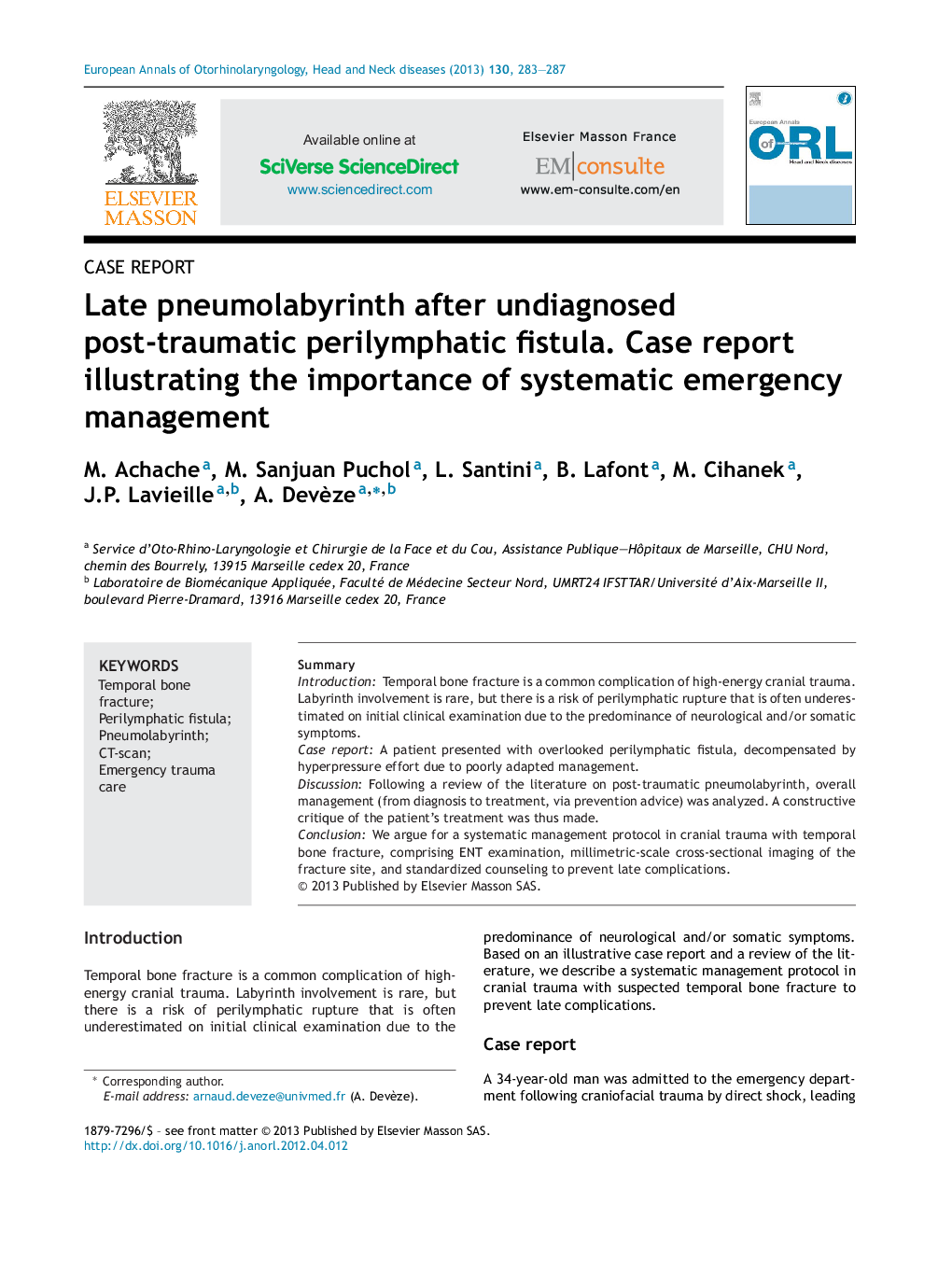| Article ID | Journal | Published Year | Pages | File Type |
|---|---|---|---|---|
| 4110171 | European Annals of Otorhinolaryngology, Head and Neck Diseases | 2013 | 5 Pages |
SummaryIntroductionTemporal bone fracture is a common complication of high-energy cranial trauma. Labyrinth involvement is rare, but there is a risk of perilymphatic rupture that is often underestimated on initial clinical examination due to the predominance of neurological and/or somatic symptoms.Case reportA patient presented with overlooked perilymphatic fistula, decompensated by hyperpressure effort due to poorly adapted management.DiscussionFollowing a review of the literature on post-traumatic pneumolabyrinth, overall management (from diagnosis to treatment, via prevention advice) was analyzed. A constructive critique of the patient's treatment was thus made.ConclusionWe argue for a systematic management protocol in cranial trauma with temporal bone fracture, comprising ENT examination, millimetric-scale cross-sectional imaging of the fracture site, and standardized counseling to prevent late complications.
